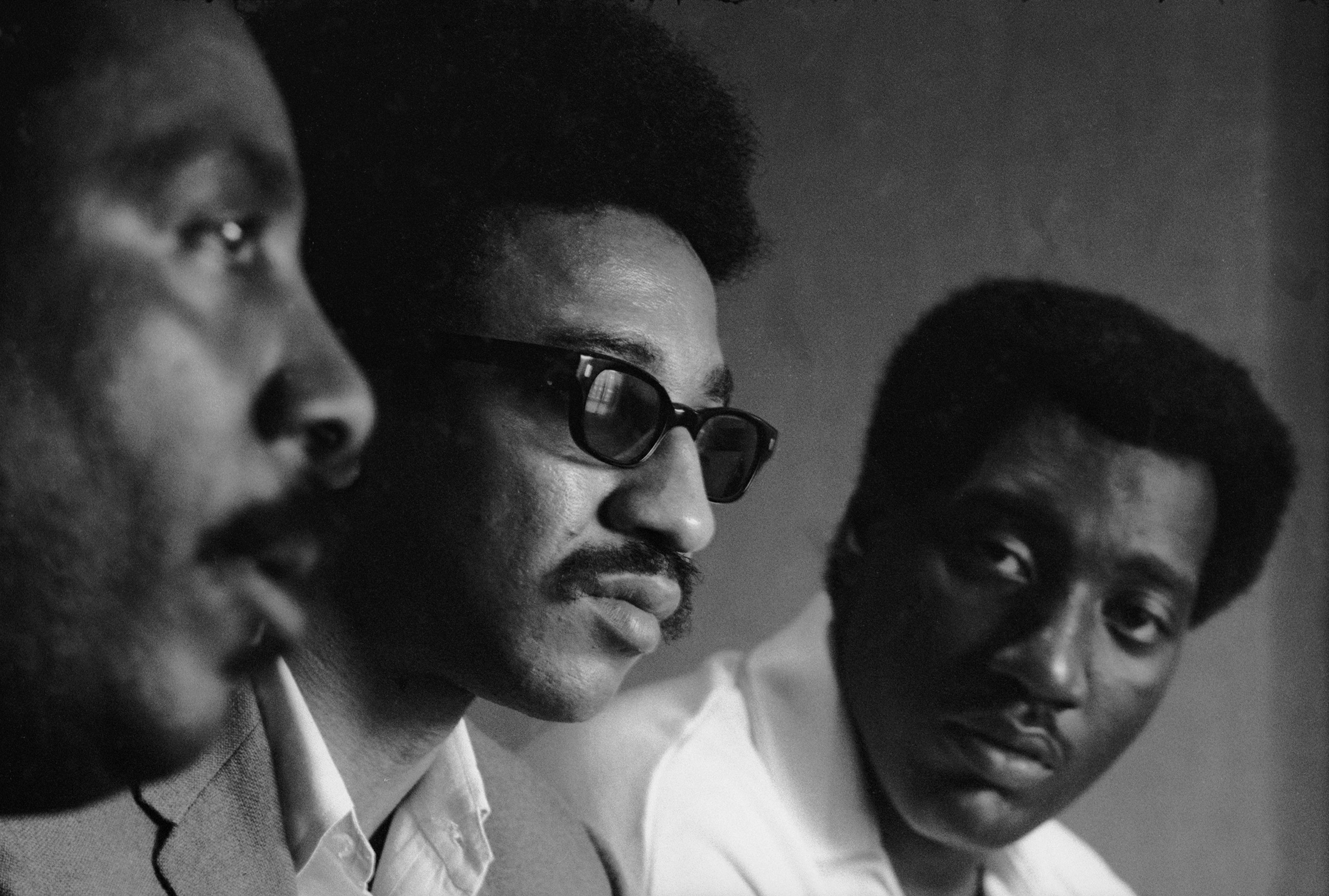It seemed like a fool’s errand to send Jamil Al-Amin a letter, expecting a response. But there I was, in the summer of 2019, reading his reply, sent from the U.S. Penitentiary in Tucson, Ariz.
Peace be unto those who do Good, Rembert. May The Creator Reward you for your kind thoughts and words. Though this part of our journey is defined by danger, and the goal seems distant, no roads are without endings …
Hope this is a happy day, with sunshine, some quiet, and the feeling that you are being thought of and wished happiness … because you are …
I am enclosing a piece from my book I’m working on, called Holy-Cost … give it a critical reading, and let me know what you think …
At this point in the letter, his note took a more personal turn.
You still playing ball?
He signed the letter “Coach.” It was the only thing I knew him by, as a 9-year-old, in 1996, staring up at his sinewy 6 ft. 5 in. frame. The location was Adams Park, in a gym on the southwest side of Atlanta. Leaving my first practice with my new team, I sat in the car and listened as my mother explained that Coach Al-Amin was a trailblazer of a Black man. I took that to heart and could tell she was serious by the tone of her voice, but my primary focus was (always) the two-part question of “Where are we eating?” and “Do they have banana pudding?” Also, meeting an important Black elder was part of growing up in Black Atlanta—the trailblazers were everywhere.
But there was something different about Coach. For starters, this was an era that seemed to measure the quality of a male coach by how much he yelled; the more, the better. Even at a young age, I’d been bossed around by my fair share of dads. But Coach Al-Amin existed as this giant of a man, clothed in his traditional Muslim threads, rarely speaking outside of his inside voice. He never screamed while we played, only talking to us like little adults.
As can sometimes happen with someone you know intensely for a period in childhood, I eventually forgot about Coach. Life went on, and sports, once my singular priority, became a hobby after I started college.
A few years into the workforce and it’s 2012, the last year I really used Facebook. A thing was happening on the platform, where people would adopt long, multi-word, scriptio continua middle-name aliases. That’s when I first noticed Kairi “Freemyfather” Al-Amin on my feed, my former coach’s son. I was instantly reminded of a man from my past.
I was in high school when Jamil Al-Amin went to prison. Across town, so was Kairi. We were rival point guards.
After seeing Kairi post about his father, I looked up which facility he was in and learned the answer was ADX Florence in Colorado, also known as a “supermax.” And while I couldn’t fully remember the specifics of the crime or the trial, I knew this to be the 23-hours-of-solitary-confinement-a-day home for the Unabomber, the Oklahoma City bomber and a handful of al-Qaeda operatives. I dove into the story of my coach’s life, quickly reminded of what I did know and floored by what I didn’t.
My mother didn’t raise me to simply know Black history—I was groomed to study it, revere it and envision a world in which I was part of a lineage. So why was I told so little about Jamil Al-Amin, a man crucial to understanding Black liberation? And why, when I brought him up to others, was I often met with blank stares?
Over the years, this is a man they called Jamil Al-Amin, Imam and Rap. A man who has a federal anti-riot act named after him. A man who had a verbal confrontation with President Lyndon Baines Johnson in the White House. That line from the Sugarhill Gang’s 1979 classic “Rapper’s Delight,” “I’m hemp, the demp, the women’s pimp/ Women fight for my delight”? It’s pulled from his autobiography.
I dove into the story of my coach’s life, quickly reminded of what I did know and floored by what I didn’t.
In his story, there’s a crescendo to this question of guilt or innocence. Did he or didn’t he? But after a full examination of his life, a more pressing question emerges: What did Jamil Al-Amin do to piss America off so much?
Most Popular from TIME
Jamil Abdullah Al-Amin was born Hubert Gerold Brown in Baton Rouge, La., in 1943. He was the youngest of three, raised by Eddie, a laborer, and Thelma, a maid and teacher. Brown looked up to his brother Ed, two years his senior, who was the first in the family to venture into activism.
“I knew who I wanted to identify with,” he wrote, about early affiliations that would inform his politics, in his 1969 autobiography, Die Nigger Die! “It was the bloods in my neighborhood, the guys who hung out down on the corner. The Black community, in other words.”
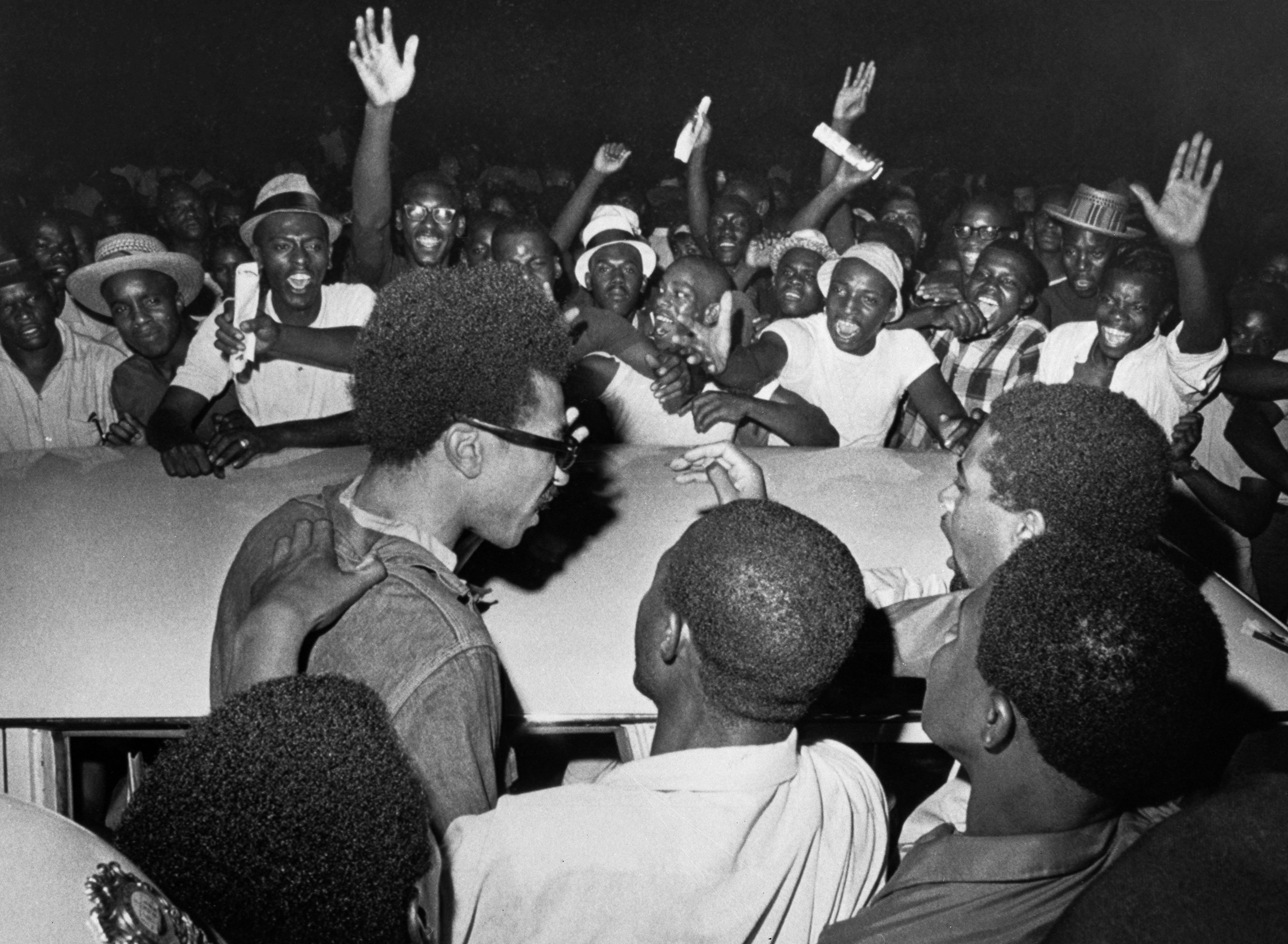
A significant portion of his memoir is dedicated to outlining the nuanced differences between whom he saw as “Black” vs. “Negro.” Publishing the book at age 25 under the name H. Rap Brown, he spoke of himself as a Black man who could not be controlled by white or Black people. He was a young man who needed things to make sense, or he would not abide. And he saw Black people who seemed to work on behalf of white supremacy as more of a threat to progress than white people were. “At some point or another, the Black child begins to challenge this authority, both within Negro America and the big white world when he confronts it,” Rap wrote.
Die Nigger Die! is a serious text, written by a hilarious man. He was “a jokester,” says Dave Dennis, civil rights activist, member of the Student Nonviolent Coordinating Committee (SNCC) and Brown’s high school classmate. Brown was also a standout athlete in both basketball and football. But by 1962, at age 18, he began joining his brother in Washington, D.C., where his work in the civil rights movement officially began. “Ed had great eloquence in the Southern oral tradition, and it was clear that linguistic skill was shared in the Brown family. Because when [Hubert] came to Howard, his nickname was already Rap,” says the writer and professor Ekwueme Michael Thelwell, who was at Howard University from 1960 to 1964, serving as the director of SNCC’s Washington office in 1964.
In Rap’s autobiography, he writes about his younger years, which he says were defined by the art form of signifying: “I learned how to talk in the street, not from reading about Dick and Jane going to the zoo and all that simple shit.” It’s also filled with rhymes: “Known from the Gold Coast to the rocky shores of Maine/ Rap is my name and love is my game.”
Once this verbal dexterity combined with politics and action, he set out on a new course. He became chairman of the Howard-based Nonviolent Action Group (NAG), even though he didn’t attend the university. “I saw my role as one of trying to get college students to identify with the brothers in the street,” he wrote. “College students, however, get caught in a trick, because they think that to be accepted by the young bloods, they have to be tough, be a warrior. But all they have to do is show the brother that they respect him and that they recognize that he is a brother. All Black people are involved in the same struggle.”
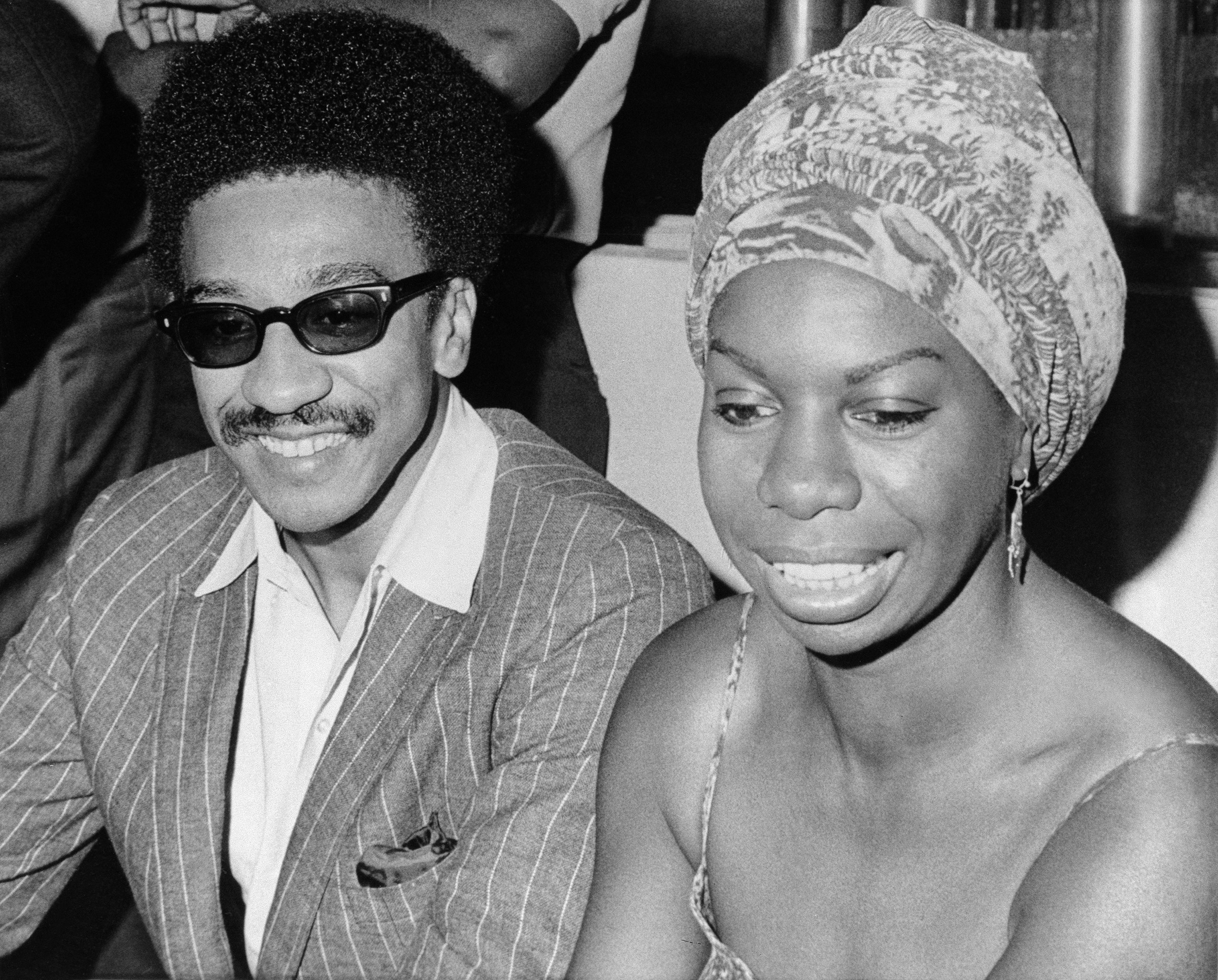
Rap continued to make a name for himself, while not being everyone’s cup of tea. This was particularly true in 1965, when he was sitting in the White House, telling LBJ, “I’m not happy to be here.”
Less than a week after “Bloody Sunday” on the Edmund Pettus Bridge, Rap joined a multiracial coalition of national civil rights leaders to meet with the President. As Thelwell later told it, Rap just happened to be in the SNCC office when the organization needed to sub someone in at the last minute. The meeting left Rap disgusted, by the actions of both President Johnson and the leaders who went to the White House supposedly to push for change.
In his memoir, Rap wrote, “The dude from the NAACP got up and said, ‘Mr. President, it really is a pleasure to be here. This will be something that I’ll be proud to tell my children and grandchildren about.’ Then came another fool and he said the same thing.” By the time it was Rap’s turn to talk, he was fed up. “I think it’s unnecessary that we have to be here protesting against the brutality that Black people are subjected to.” He wasn’t done. “And furthermore, I think that the majority of Black people that voted for you wish that they had gone fishing.”
“I’m not happy to be here.”
At 21, Rap was becoming a man who had no time for civility, who would say what everyone else was thinking, damn the consequences. He understood what white America had done to a large portion of Black people, who understood being agreeable as a path toward salvation, while secretly starving for action. From that moment, Rap offered Black people a different type of leader, one who spoke seemingly without fear.
By the spring of 1967, he was elected chairman of SNCC, which had become an increasingly militant organization, following in the footsteps of Stokely Carmichael. And by July, he was in Cambridge, Md., speaking at a rally.
The year 1967 was one of more than 150 race riots. It was the year the phrase When the looting starts, the shooting starts was popularized by Walter Headley, then the police chief of Miami, more than a half century before it was brought back into the public consciousness by Donald Trump in response to protests after the murder of George Floyd. It was the year COINTELPRO, a program started by the FBI, would target a group of “Black Messiahs” (Rap included) who could “unify, and electrify, the militant black nationalist movement.” And it was the year Rap’s relationship with law enforcement began its rocky road.
Rap was speaking on top of a car, above a crowd in Cambridge, as attendees cheered him on. “We are going to control our community. We ain’t going to have the honky coming over here and appointing five or six nigger cops to come down here and ruin our community. That’s Black Power.” He went on. “Newark exploded. Harlem exploded. Dayton exploded. Cincinnati exploded. It’s time for Cambridge to explode, baby.”

The cheers only intensified. “They say, if Dayton don’t come around, we’re gonna burn Dayton down. Black folks built America. If America don’t come around, we should burn it down.”
After the speech, as Rap walked an attendee home, he was struck by police buckshot and was rushed to get medical attention. Hours later, Cambridge started to burn. Most of the national news portrayed Rap as the catalyst. We would later learn, from a once buried memo from the Kerner Commission report, that investigators determined that the real blame lay with the Cambridge police chief, for his “emotional binge in which his main desire seems to have been to kill Negroes.”
A fugitive warrant was out for Rap’s arrest, and ultimately he was charged by the state of Maryland with inciting a riot. What followed, as described by Peter B. Levy in his book The Great Uprising, was Rap being “arrested, released from jail, and rearrested on at least eight separate and unrelated charges over the next four years.”
Rap’s lawyer was William Kunstler, the man who would later be best known for defending the Chicago 7. He argued that the U.S. government had a clear vendetta against his client, claiming “vindictive and unrelenting efforts to destroy him.” Another attorney argued that the COINTELPRO practices were in full bloom, stating that it wasn’t actually about any cases against Rap sticking, but rather more to slow momentum, “so that the wellsprings of social action can’t move in a directed form.”
By 1970, his trial for the incident in Cambridge was finally set to start. Rap, who was now 26, did not appear. In May, the FBI added him to its most-wanted list, where he stayed for 18 months. In October 1971, in a standoff with police, he was shot and apprehended. He spent the next two years awaiting trial in a variety of prisons, including Rikers Island and the Manhattan Detention Complex, known as “The Tombs.” Once he was sentenced, Rap spent five years in Attica.
Karima Al-Amin met her future husband in Harlem, one week after he was shot in Cambridge.
The daughter of a woman who managed the payroll for the NAACP Legal Defense Fund, she spent her early life much closer to the traditional civil rights movement. “I became the babysitter for Thurgood Marshall and most of the African American judges and lawyers in that whole circle,” says Karima, now an immigration attorney. “So by the time I met Imam Jamil, that was my background.”
Jet magazine announced their March 1968 nuptials under the headline She’s With Him, with a photo of the couple outside a federal court in New Orleans, his hand on her shoulder, her Afro larger than his. In three years, however, Rap would be in prison and no longer known as H. Rap Brown.

It didn’t happen overnight. He was invited to partake in Jumu’ah, the Islamic Friday prayer, and joined. Speaking with City Paper in 1992, he recalled that Malcolm X made him more curious about Islam, and that as his interest grew, he began to see the religion as a “continuation of a lifestyle,” noting “it became evident that to accomplish the things we had talked about in the struggle, you would need a practice.”
Upon his release in October 1976, H. Rap Brown, now known as Jamil Al-Amin, settled with Karima in Atlanta, where she had moved while he was incarcerated. It was there, in the neighborhood of the West End, that he became an organizer again, building a small Muslim community, opening a grocery store and eventually being chosen as the imam.
“We came to be good friends from playing ball because a lot of people couldn’t whoop him down there,” says Chad Russell, Al-Amin’s friend for more than 30 years, on their basketball-playing days in the neighborhood. For hours, we sat on the corner near Al-Amin’s old store, as Russell told stories about the area’s transformation. He sold fruit and sandwiches to passersby, situated across the street from a mural of Al-Amin, dressed in all white and praying, that was painted during the pandemic.
For a second time, Al-Amin was an unlikely leader. But it was different this time. His loud, often profane way had been exchanged for a more docile demeanor. In 1993, he penned a scholarly book on the foundations of Islam. But evident from the title, Revolution by the Book, these changes did not result in a fully new man.
“In terms of being able to speak truth to power,” says Akinyele Umoja, professor of African American studies at Georgia State University. “That element of him had not been compromised.”
Professional athletes flocked to him, no matter where he lived. Karima remembers cooking when Kareem Abdul-Jabbar would come to town. “And if he didn’t come to eat, the imam would take the food to him, and then I would look at the game on TV and hope that he doesn’t cramp over my food,” Karima says.
And that community was only a fraction of his influence. Because you may evolve, and you may grow up, but you don’t just lose the cool. Even as he left behind “H. Rap Brown,” the growing popularity of rap music meant a new generation was discovering his words.
“When I became an MC in 1977, anyone who was rapping tried to gain an edge on the competition by dipping into places where you wouldn’t think others would find rhymes,” says Davey D, a journalist and hip-hop historian who grew up in the Bronx in the 1970s. “Some people dipped into the Mother Goose rhymes, some people knew about Dolemite or Blowfly. I knew about H. Rap Brown, so, quite naturally, he was going to be my direct influence as an MC.”
“Coming up, hip-hop was such a young art form,” says Killer Mike, rapper and activist from Atlanta. “Rapping in the ’60s and ’70s was cats talking that sweet shit, or highly informed politicized jive, but it sounded good. So I always thought he had the coolest name in the world with H. Rap Brown. I thought his name was the most revolutionary shit.”
Going back to their time as a couple in Harlem, the Al-Amins had always attracted Black people who spoke up, from Nina Simone to Muhammad Ali. Al-Amin also inspired unique corners of Black thought, gracing the cover of Nikki Giovanni’s book of poems Black Judgement in 1968. Olympians Tommie Smith and John Carlos, the runners who famously raised Black Power fists at the 1968 medal ceremony, studied his words.
"I knew about H. Rap Brown, so, quite naturally, he was going to be my direct influence as an MC.”
“Back in the ’60s, and football players in particular, if they weren’t getting what they wanted with management, they would come to him,” Karima says. “He would go and just stand there, and they would end up getting what they wanted.”
By the mid-’90s, Al-Amin’s status as an international leader had only grown. But that revolutionary tag, while inspiring to some, was a threat to many, especially those who never let him out of their sights, even after decades out of the spotlight.

From 1992 to 1997, the FBI closely surveilled Al-Amin, generating 44,000 documents.
“He’s a Muslim. He’s a former militant. He doesn’t fit in with the good Negroes that are trying to work within the system,” says former Black Panther chairwoman Elaine Brown, who is writing a book on Al-Amin.
“H. Rap Brown is a damn pariah.”
On Aug. 7, 1995, Al-Amin was arrested in Atlanta. Through a joint mission of the FBI, the Bureau of Alcohol, Tobacco, Firearms and Explosives, and local police, he was charged with felony aggravated assault for shooting a man outside his grocery store. The victim initially labeled Al-Amin as the shooter. Weeks later, he reversed his claim, claiming that the police and federal agents had pressured him to say it was Al-Amin, even though he told them, “I said I didn’t see who did it.” The charges were dropped.
On May 31, 1999, Al-Amin was pulled over in a north Atlanta suburb, on the grounds of driving a car the police claimed was stolen. He said he’d bought it earlier in the month. Eventually, he and his car were searched, and the officer found a badge. When questioned if he was a police officer, Al-Amin said he was, in the same city where the car was registered: White Hall, Ala.
On March 16, 2000, sheriff’s deputies Aldranon English and Ricky Kinchen arrived at Al-Amin’s grocery store. They were there to serve a warrant regarding his failure to appear in court for the 1999 charges of impersonating an officer, receiving stolen property and having no proof of insurance. When the officers got out of the car, a man appeared next to a black Mercedes, and gunfire was exchanged. Both English and Kinchen were hit multiple times, with English surviving and Kinchen dying the next day.
In the days that followed, English said that the assailant was shot, which a trail of blood at the scene seemed to confirm. He also said, after seeing a photo lineup of suspects, that the man was Al-Amin.
A hunt for Al-Amin began. He was an FBI most-wanted fugitive, again. Four days later, he was captured in White Hall. In the town’s woods, the police retrieved a rifle that was a part of the shoot-out with deputies English and Kinchen, as well as a bullet-hole-filled black Mercedes.
When Al-Amin was apprehended, the police saw that he had not been shot. And when they tested the trail of blood outside the grocery store in the West End, it wasn’t either of the deputies’. And it wasn’t Al-Amin’s.
Covering the case in the Atlanta-based publication Creative Loafing in 2002, Mara Shalhoup wrote, “English swore that his assailant had gray eyes; Al-Amin’s are clearly brown” and “the guns that were found near Al-Amin when he was captured in Alabama—guns later linked to the shooting—did not bear Al-Amin’s fingerprints.”
“He’s this rare case where there’s such compelling evidence against him,” says Shalhoup, now an editor at ProPublica, citing English’s statement that Al-Amin was the assailant. “And such compelling evidence to suggest he didn’t do it.”
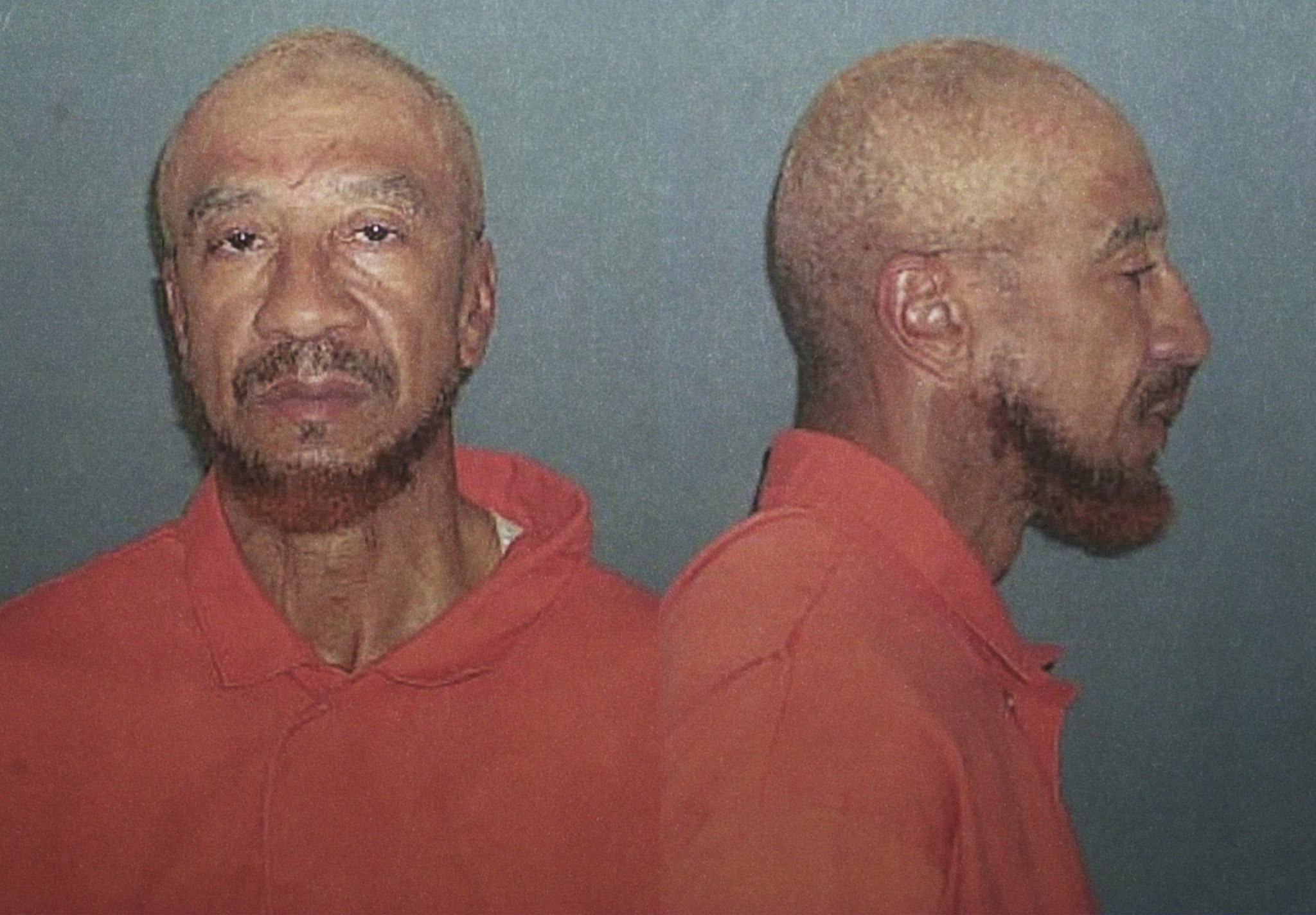
Jury selection for the trial of Al-Amin was scheduled for Sept. 12, 2001. Pushed back four months by the 9/11 attacks, the trial—of a visible face of Islam, locally, nationally and internationally—began on Jan. 7, 2002. After a trial that concluded in two months, on March 9, the majority-Black jury came back with a guilty verdict, on 13 counts, including felony murder and possession of a firearm by a convicted felon. His sentence was life without parole. His first stop was the state prison in Reidsville, Ga.
When Al-Amin arrived, Muslim inmates, both in his prison and throughout the state, wanted him to lead them, to be their imam. But he experienced frequent stints in solitary confinement, and in 2007 he was transferred to the supermax facility in Colorado, where he spent the next seven years, followed by a stint in a North Carolina prison medical facility and his current location, a federal prison in Arizona.
Throughout his incarceration, there have been appeals, protests, petitions, calls for retrial and a videotaped confession by a man currently in a Florida prison. In 2020 the U.S. Supreme Court declined to take his case. During his trial, he was under a gag order, and since he’s been incarcerated, he has been extremely limited in his ability to speak to the public. His 2014 diagnosis with myeloma aided in his transfer out of the supermax, but since then the illnesses have only gotten worse. He spent two years without his sight, needing inmates to read his medical bottles, simply because the prisons wouldn’t schedule him to have cataract surgery. On Aug. 18, 2021—three days after a protest outside of Al-Amin’s prison in Arizona—he finally received his surgery, gaining his sight back.
Prisoner No. 99974-555 quietly exists, still alive, increasingly sick but refusing to die, eager to speak but largely unheard from.
I’ve been in touch with his wife and son for months, and they say he wants to speak. In September, the jail finally replied to my repeated requests to talk to Al-Amin for this story and told me to apply for an interview. I emailed once, twice and finally six times, but still nothing. If the goal of the system was to silence Al-Amin, it may have finally worked.
Karima says the family is still asking for release but would also be fine with a new trial. “We’re in a time fight,” she says. “Whether he dies or not right now has a lot to do with medical neglect. So we want to get him out. They’ve said he will die in prison and be forgotten. We’re saying he’s not going to be forgotten.”
Al-Amin, who turned 78 in October, sits in prison, serving a life sentence without the possibility of parole. Few figures in American history have simultaneously received such local, national and international praise and respect, fear and villainization. The reality is that Al-Amin hasn’t been discussed on a scale that fits the magnitude of the man.
Following a year of uprisings, an attack on the Capitol, and an election cycle that further illuminated a flawed government and a divided nation, in a society that freely questions the abolishment of the police, and amid a culture war that only intensifies—the revolutionary life, words and trials of Jamil Al-Amin must be considered, in all of their discomfort. Our world is juggling a collection of breaking points, but it’s not the first time we’ve been here. And it’s helpful to hear from those who thought the most clearly, during the most tumultuous times.
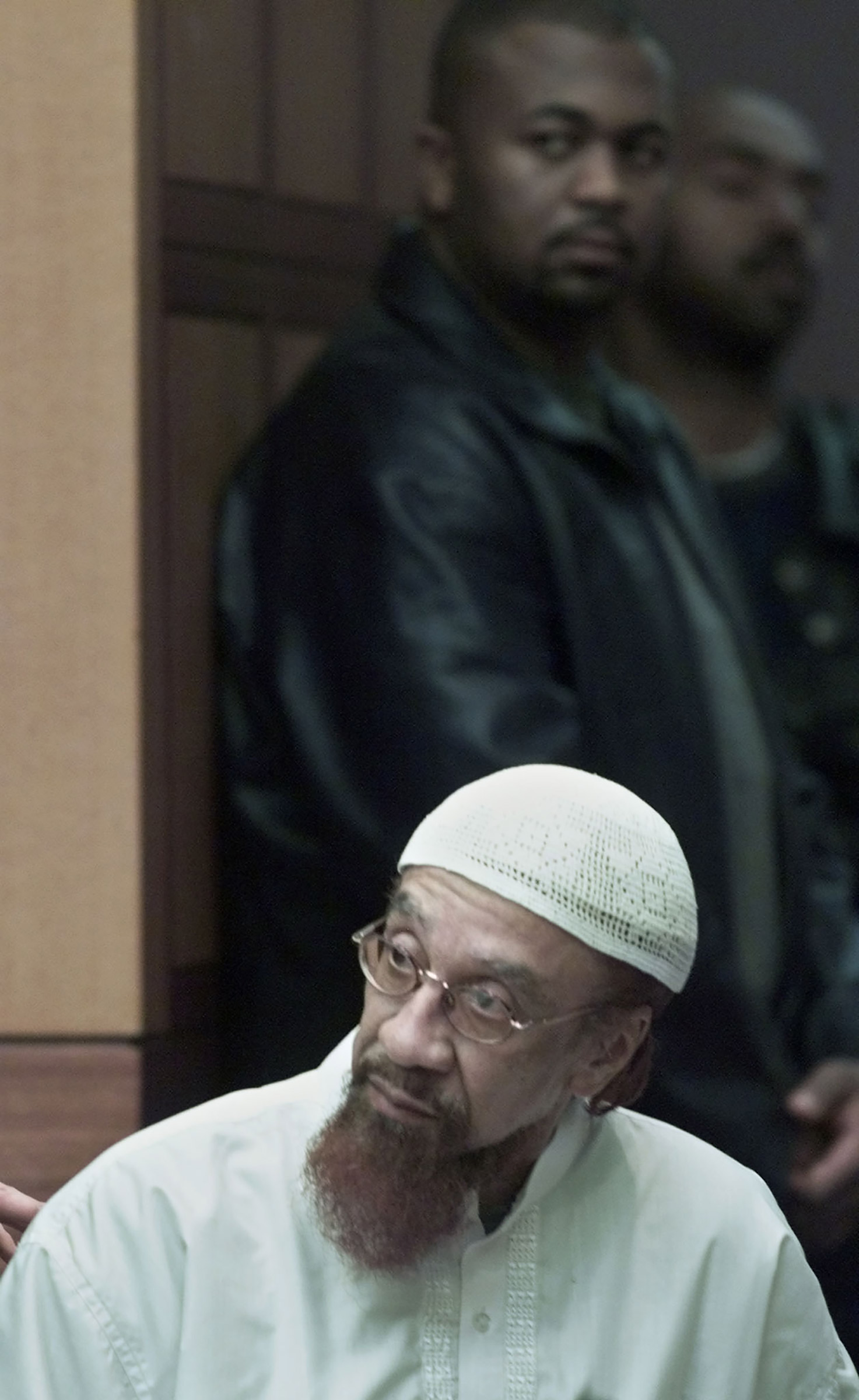
And though he’s absent from many history books, missing from many Black History Month programs, and the feats of his life remain largely unknown, his impact continues to be felt. In May 2020, following the killing of George Floyd by a Minneapolis police officer, St. Louis activist Mike Avery, a Black man, drove 560 miles to join the protests. Three days later, he was arrested by the FBI and charged with violating the Anti-Riot Act, a law that makes it a federal crime to cross state lines to incite a riot. The FBI cited Avery’s Facebook posts as the reason for the arrest. (His lawyer said those posts were “completely mischaracterized,” and the charges were dropped.)
The act is also known by another name, tacked on as a compromise in the historic 1968 Civil Rights Act: the Rap Brown Law.
It’s the same law that the Chicago 7 were charged with, along with many others, following the 1968 Democratic National Convention—a story dramatized in the Academy Award–nominated 2020 film The Trial of the Chicago 7. And in the Academy Award–winning 2021 film Judas and the Black Messiah, a biographical drama about Fred Hampton and the lengths to which the FBI went to silence Black leaders who could organize, mobilize and inspire, the first person we see speaking in archival footage, within the first two minutes, about Black people, is H. Rap Brown.
“Those are not riots. Those are rebellions,” we watch him say. “People are rebelling because of conditions, not because of individuals. No individual creates a rebellion. It’s created out of the conditions.”
For more than 50 years, a man and a system have been at odds, with neither willing to truly wave the white flag. It’s a true American story, one about law and order, about the consequences of outright, unwavering dissent, and the establishment’s continued need to neutralize unbought, unbossed Black thought that catches fire.
In this fight, there are no winners, and there is no justice. This is a story of how far we haven’t come.
—With reporting by Nik Popli and Simmone Shah
More Must-Reads from TIME
- Cybersecurity Experts Are Sounding the Alarm on DOGE
- Meet the 2025 Women of the Year
- The Harsh Truth About Disability Inclusion
- Why Do More Young Adults Have Cancer?
- Colman Domingo Leads With Radical Love
- How to Get Better at Doing Things Alone
- Michelle Zauner Stares Down the Darkness
Contact us at letters@time.com
